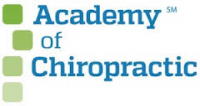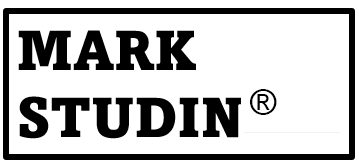Primary
Spine Care 12 - CASE MANAGEMENT & DOCUMENTATION
20 Credit Hours
*CE Credits are for Doctors of Chiropractic.
**CME Credits are for Medical Doctors and Doctors of Chiropractic
***This course is approved for 8 credits in California THRU 11/31/22, approved for 19 credits until 11/30/23. Please note this course will not be approved in the state of CA after 11/30/23.
****This course is approved for 19 credits in California from 12/1/22-11/30/23.
*****This course is approved for 8 credits in Oklahoma.
This program focuses on the trends in
healthcare and how clinical chiropractic, based upon the evidence in the
literature, fits into the national trends. It shows the doctor of chiropractic
the critical role of compliant documentation in reputation building and to
prevent adverse legal issues with complaint records. The course also covers the
latest MRI spine interpretation terminology and identifies biomechanical
pathology using the latest mensurating tools.
Module
1 – 2 Hours
MRI
Spine Case Review
Clinical
case review of MRI's including sagittal, axial, T1, T2, STIR, and proton
density sequences. The vertebrate, spinal cord, discs, nerve roots, thecal sac,
posterior longitudinal ligament, epidural veins, and fat saturation pulses will
be identified. Pathology will include bulges, herniations, protrusions,
extrusions, myelomalacia, cord edema, and Schmorl's nodes.
Module
2 – 2 Hours
Demonstrative
Documentation Reporting
Creating
documentation that is demonstrable in design to show pathology visually. How to
prepare demonstrable records that are legally defensible and accurate in the
description of the pathology.
Module
3 – 2 Hours
Age-Dating
Herniated Disc and TRauma
Age dating herniated discs and trauma is a critical skill for
an expert in spine. It combines the clinical skills of interpreting X-ray, MRI,
and other imaging modalities with a clinician's understanding of joint
pathology. This level of expertise is critical when collaborated with other
physicians or working in the medical-legal environment as an expert. Age dating
pathology is also central to creating a prognosis on your patient's recovery
and must be evidence-based in rationale.
Module
4 – 2 Hours
Stroke
Evaluation and Risk Factors in a Chiropractic Practice
Diagnosing, triaging, and documenting
headaches, migraines, and vascular incidents (stroke) in the primary provider's
office. Imaging protocols based upon history and clinical presentation will be
presented, along with analyzing imaging findings in determining the etiology.
There will be an extensive question and answer session following the
instructional presentation.
Module
5 – 1 Hour
2022 Trends in Documentation
Evidence-Based demonstrative documentation is
typically the arbiter for creating successful patient-centered collaborative
care. This "reputation building" focus has already helped develop
relationships with MD PCPs, MD Specialists, ERs, and Urgent Care Centers.
This demonstratively removed the Non-Specific Back Pain "Dogma"
that too many have held because technology and the evidence have not supported
what chiropractic has known for over a century. We now have those tools and
once learned, chiropractic utilization "skyrockets because of the
evidence.
Module
6 – 1 Hour
Documentation made easy. Effectively creating
demonstrative medical-legal documentation and meeting the needs of the courts,
and making your "4-Corner" (narrative) report to build your
reputation as an evidence-based provider. The
step-by-step minutiae of building a report, accomplishing
report writing timely and effectively by understanding the regulatory and
administrative rules. Learn how to educate the lawyer on bodily injury through
evidence-based demonstrative reporting.
Module
7 – 1.5 Hours
MRI Nomenclature and the Evidence of the Chiropractic
Lesion
The latest nomenclature in MRI spine interpretation [lots
of changes], and incorporating spinal biomechanics to create an accurate
diagnosis and get paid. The reason medicine gets paid more than chiropractic is
they have demonstrable diagnostics. We must institute protocols that WE ALREADY
HAVE to confirm patho-neuro-biomechanical lesions [Subluxations] are
present. A "MASTER CLASS" in Strain-Sprain in fully
understanding the permanency of this connective tissue disorder and how to
certify long-term care with a demonstrable diagnosis.
Module
9 – 2 Hours
Imaging Joint Ligamentous Instabilities
Identifying different types of arthritis in both plain
film and MRI. Inclusive of Osteo, Psoriatic, Rheumatoid, Gout, Infections, and
Spondyloarthropathies. Dr. Baker is an Assistant Professor of Clinical
Radiology at the State University of New York at Stony Brook, School of
Medicine, and teaches the radiology and MSK radiology programs.Module
9 – 2 Hours
Module 9 – 1.5 Hours
Master-Class in Ligament Physiology and Pathology
Master-Class in ligaments; anatomy, physiology,
vascularization, neurological innervation, tissue repair and how they all
relate to clinical practice. Ligament
pathology correlating to the mechanisms of patho-neuro-biomechanical lesions
(vertebral subluxation complex). Also, how ligaments play a critical role in a
chiropractic spinal adjustment and defining the chiropractic spinal adjustment
mechanisms.
Module
10 – 1 Hour
Disproving Non-Specific Back Pain
Case Management incorporating Spinal Biomechanics, MRI,
and clinical findings when collaborating with medical specialists and lawyers.
Using Case Management as the foundation for both consistent referrals and
long-term forensic consulting relationships. Disproving based upon the
evidence, the Dogma of “non-specific back pain.”
Module
11 – 1 Hour
Spinal Disc Pathology in Clinical Practice
A roundtable discussion of diagnosing spinal
pathology in clinical practice. Dr. Peyster is a Harvard-trained
neuroradiologist published extensively over the last 40 years. He will be
presenting typical cases managed in chiropractic offices with an in-depth
discussion. He will be focusing on collaborating with a radiologist on case
reviews.
Module
12 – 1.5 Hours
Neurosurgical Roundtable Discussion
A roundtable discussion of collaborative spine care. Dr.
Shady has 30 years of extensive experience in both working with and supporting
chiropractic care.
Module
13 – 1.5 Hours
DC vs. MD vs. PT; The Evidence
Chiropractic vs. Physical Therapy vs. medication for
mechanical spine issue; extensive research verifying chiropractic as the best
first choice, resolving the non-specific back pain issue as dogma, with the
evidence. The latest [overwhelming] research will institute the re-direction of
MD referral patterns from PTs to DCs. The latest physiological basis for why
the chiropractic adjustment works and what constitutes a
patho-neuro-biomechanical lesion [Subluxations].
Fee: $399
Course Objective:To be able to integrate causality, bodily injuries, and persistent financial losses demonstratively
Instructor(s):
Mark Studin DC, FASBE(C), DAAPM
Michael Schonfeld DC,
DABCO
Don Capoferri DC
Ma
...
States Approved: AL, AK, CO, DE, GA, ID, IN, IA, KS, ME, MD, MA, MN, NE, NV, NJ, NC ND, OH, OK, OR, RI, SC, SD, TN, TX, UT, VT, VA, WV, WY

